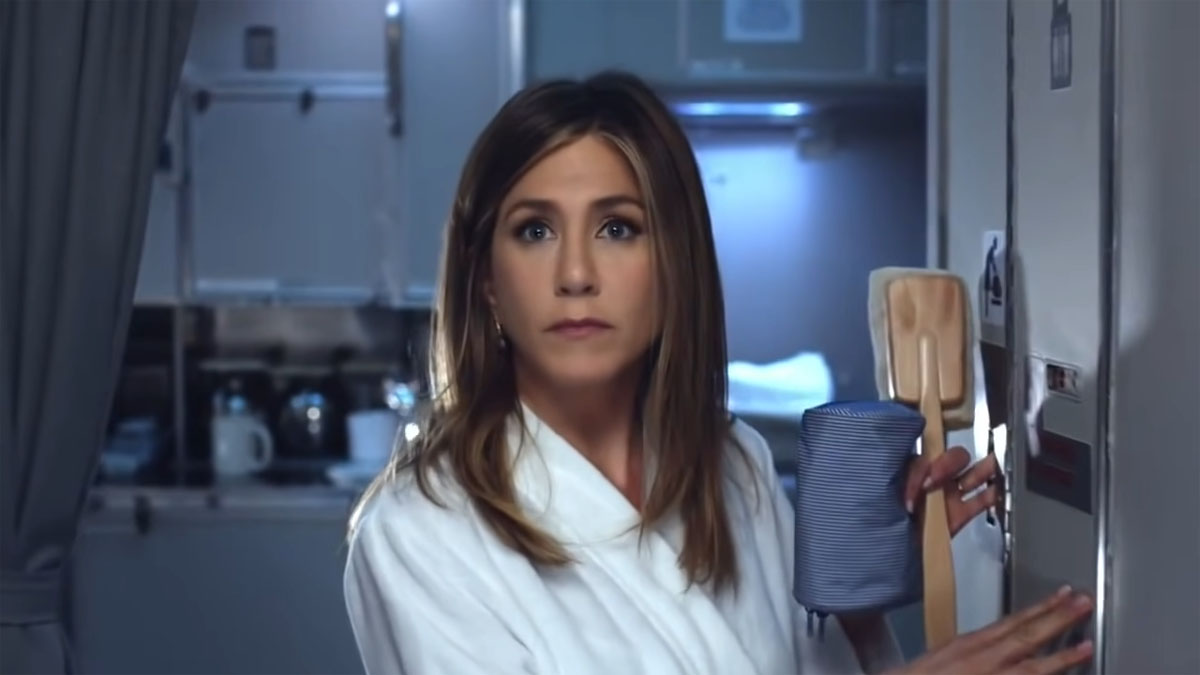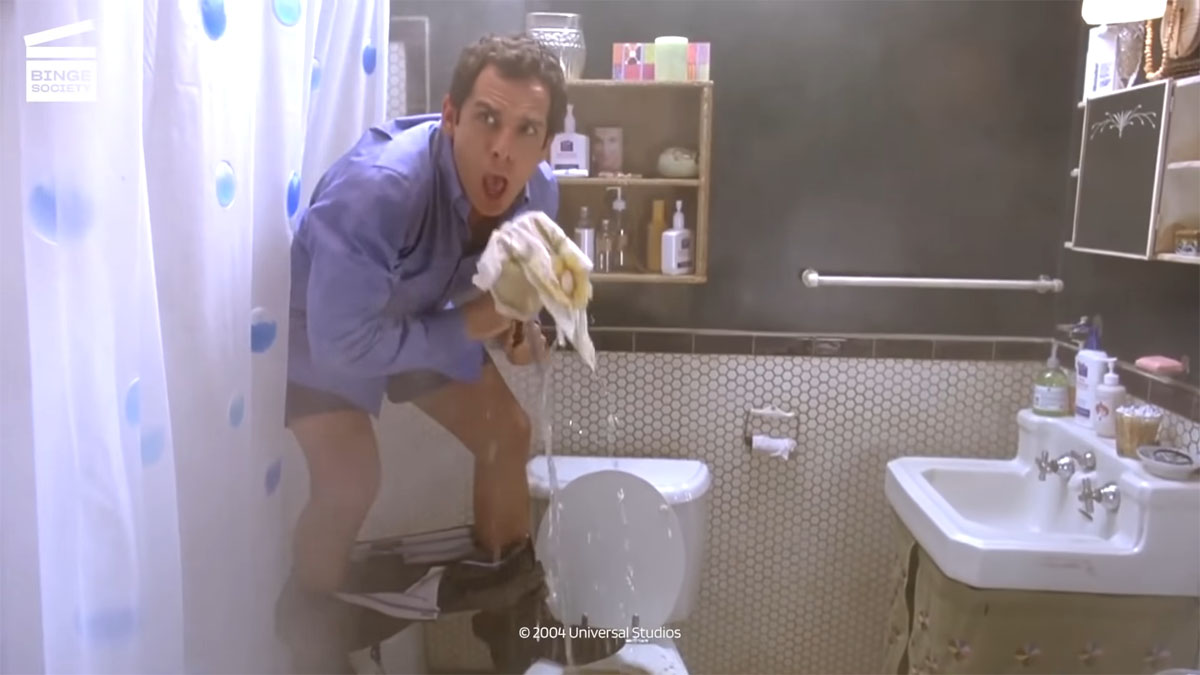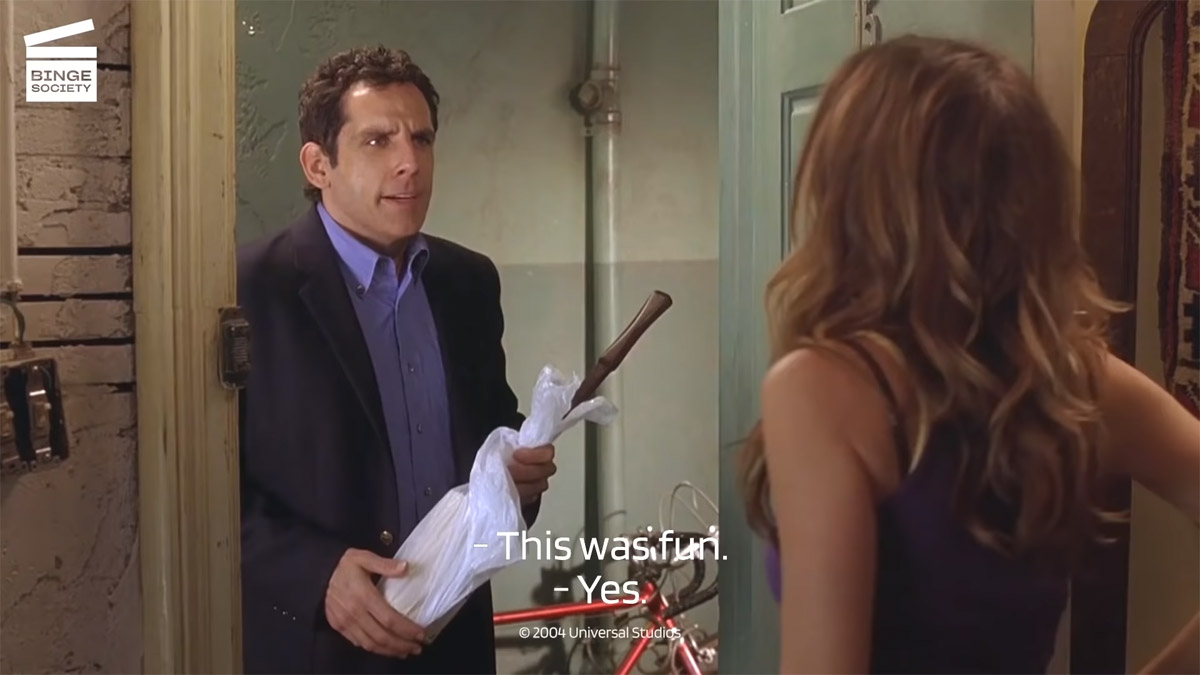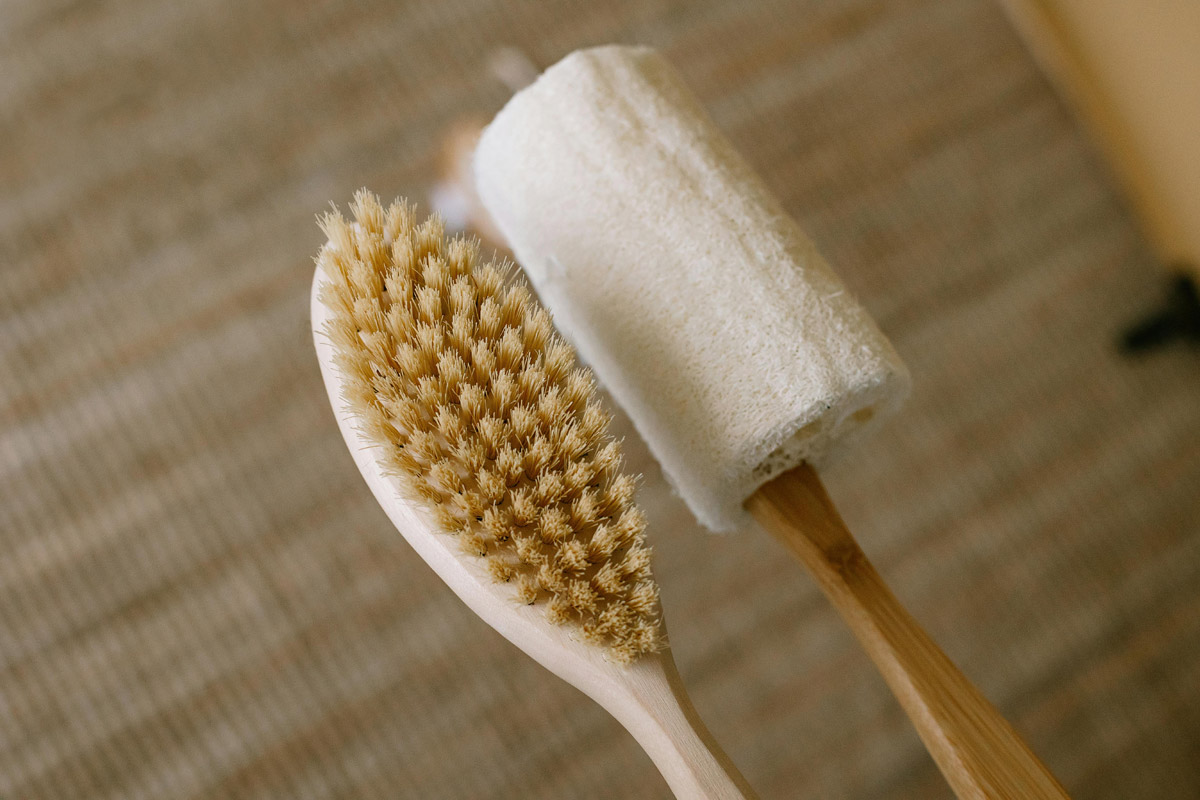
The tropical gourd Luffa has been around for ages. It can be eaten as a vegetable, and its fibers have provided endless uses, most notably the bathing sponges we call loofahs. But the qualities that make loofahs so good at whipping up a good lather are also what make them breeding grounds for all kinds of bacteria and fungi. Especially in conjunction with the damp shower/bath setting. While most loofahs we use today are synthetic, the same hazards generally apply. The Cleveland Clinic spoke to dermatologist Dr. Melissa Piliang about the hygienic issues to be aware of with loofahs, including guidelines for proper cleaning of them. First we had the great celebrity bathing habits debate; now can pore over how often we should be bathing the bathing products! Read on, loofah-lovers, and answer me honestly whether the upkeep is worth the scrub:
A bacterial playground: By their nature, loofah sponges have lots of nooks and crannies, and they’re very porous. When people use a loofah to scrub off dead skin cells, those cells become lodged in those nooks and crannies. And that sets the stage for a bacterial playground, says dermatologist Melissa Piliang, MD. But that doesn’t mean you should never use one — you just need to know how to keep it clean. … You may love your loofah, but you won’t want the things that can lurk in a loofah to linger.
E. coli and Staphylococcus and Streptococcus, oh my! “They’re used in a wet environment and you hang them up in the shower, which is also a wet environment. They don’t ever totally dry out, so the loofah is a beautiful breeding ground for bacteria.” Some kinds of bacteria that may be found in your loofah? How about: E. coli, Pseudomonas aeruginosa, Staphylococcus, Streptococcus. Loofahs can also contain fungal organisms that lead to skin infections. “That’s why it’s important to make sure you keep your loofahs clean, replace them regularly and use them gently — don’t rub your skin too vigorously,” stresses Dr. Piliang.
Dr. Piliang’s prescribed cleaning for loofahs: Dry it daily. Rinse your loofah well after each use. Shake it out thoroughly and hang it in a cool place — probably not in the shower — where it has the best chance of drying out. Avoid using it for a few days after you shave. Bacteria can enter your skin through any sort of nick or cut, so you shouldn’t use your loofah for a couple of days after shaving your legs. … Never use it on your face or in your genital area. Those parts of the body are sensitive. … Clean it weekly. “No matter which loofah you’re using, you should clean it at least once a week,” Dr. Piliang instructs. To do so, soak it in a diluted bleach solution for 5 minutes and then rinse thoroughly. Or put it in your dishwasher.
How often you should replace a loofah: Dr. Piliang offers the following guidance: “If you have a natural loofah, you should replace it every three to four weeks. If you have one of the plastic ones, those can last for two months.” And pay attention to its appearance and smell, she notes. “If you notice any mold growing on your loofah, you should throw it away and get a new one. Or if it develops a mildewy or musty odor — that’s a sign you should get rid of your loofah.”
Washcloths for the win? They don’t present the same degree of problems. Their physical structure makes them less susceptible to anything lodging in them — and also makes them easier to clean and dry, Dr. Pilianger says. Plus, you probably tend to wash them in the laundry and replace them more often than you would with a traditional loofah. You can also consider other options like silicone bath scrubbers, which are made with antimicrobial benefits or sea sponges, which are grown in fresh bodies of water and boast some antibacterial properties.
I genuinely have no horse in the loofah vs washcloth race. Why? Because I’ve been a soap bar-direct-to-skin practitioner for most of my adult life. A magazine I was working for in my early twenties sent me to cover a Cetaphil-sponsored dermatologist who waxed poetic on the risk of over-exfoliation to sensitive skin from any kind of scrubbing aid. I can in no way vouch for the science behind this! And in truth I’ve stuck with the practice mainly for financial reasons. I have to routinely spend money on tampons/pads, razors, toothbrush heads, the list goes on and on. I’m drawing the line at loofahs! I don’t need a middleman for soap! I can froth up a Dove bar all on my own, thankyouverymuch. But of course no judgment to anyone who does use a loofah and follows the above cleaning precautions, you’re a far less lazy woman than I. Finally, gotta give props to the reporter for the rollicking alliteration in this sentence: “You may love your loofah, but you won’t want the things that can lurk in a loofah to linger.”
Photos are screenshots from YouTube and credit Hanna Auramenka on Pexels














After reading this post I am throwing out my loofah as soon as I get home. I don’t know what I am going to use now instead, a washcloth maybe which means I am going to have to use a clean washcloth every time because I am pretty sure bacterial will grow on the damp washcloth hanging in my shower.
Well, you could wash the washcloth with soap before you hang it up to dry. People have been doing their laundry that way for centuries. Plus, bacteria are everywhere – we probably have more bacteria in our bodies than we do regular cells.
I will start by saying I do not have sensitive skin, but as I get older it is getting drier. I use wash clothes and loofah interchangeably, depending on my mood and which soap to use. I toss my loofah in with the towels to wash – read that in article a few years back. And @Eurydice, I agree with you 100%.
BUT I am religious about the kitchen dish clothes and sponges. Those I do sanitize and bleach on a regular.
I never used it because it felt like showering with sanding paper to me but as Eurydice says everything has bacteria in it, particularly in the bathroom. Just clean and dry everything off between uses.
Salux cloths for me all the way!
Oh yes – was just coming here to say that. I also have another set (can’t remember the name of the brand off hand) where its the same material but in little bright pink / green hand sized squares. They are also very good thou they do shrink a little when you wash them.
I have folliculitis on my legs, and my derm and I think I probably developed it from overzealous loofahing when I was younger with those plastic ones from bath and body works
You can have my loofah out of my cold dead hands.
I’m a hands and soap person… loofahs or other things even washcloths just add a level of complexity to my shower routine that I can’t manage in the morning (plus the ‘is this washcloth still okay? Or should I have washed it last time? dilemma stymies me)
It’s like body washes … one more thing I have to think about that leads me to go back to “Bar of soap? Warm water? Big towel to dry off with? I’m good” simple unscented moisturizer after and that’s it.
I will use a washcloth when I take a bath though, or occasionally on my face if I’m not showering that day, but that’s a one time and into the wash use.
Though that might be because of my very pale sensitive skin, so my default skin care approach is “less is more” after years of reacting to random products.
I’m a hands-and-soap person too, I think it’s been close to 20 years since I last regularly used a loofah or anything like that. If I feel like I need some extra exfoliation (like if I’m going to be applying self tanner) I have a body scrub that I can use. I like to think that I’m clean regardless haha.
Fondly remembering the local news broadcast where they interviewed someone about cleaning. They then interviewed a local psychiatrist and asked what he would recommend if someone came in saying they did this cleaning routine. “Well, I’d probably start with some anti-anxiety medication and recommend therapy…”
The bacteria, etc in your shower come from your gut and microbiome. Human have skin and have evolved to generally not get sick from their own bodies as long as they take basic sanitary precautions. Remember all those studies about how you should throw your kitchen sponge away every week? America’s Test Kitchen studied it and found that you’d have to indulge in really disgusting sponge treatment to get the reported levels of bacteria. Rinsing your sponge out, squeezing it dry and leaning it up against something to dry vertically left sponges with acceptably low levels of bacteria.
Every time I run the dishwasher (every 3-4 days) I throw in my kitchen sponges. I love America’s Test Kitchen and trust their cooking/cleaning advice implicitly.
Dishwashing sponges is not a bad idea indeed. But I just use cloths that I throw in the hamper regularly for my dishes and do the same with washcloths in the shower… It’s not really for the fear of bacteria (we have way more growing naturally on us; where do people think the e coli is coming from?!) but I just don’t like using things that you have to throw after use. I’m cheap and it’s not very sustainable. Even if loofa is compostable, unless you grow it yourself, it still has to go through the whole transport/packaging process whereas a cotton cloth will last years
Hands and soap person here too – been doing it for 10 years since I read that loofahs/scrubbing and friction in general cause “bacne” – can vouch that this is true, I always had acne on my back before I stopped and haven’t had a problem with it since then. Especially for sensitive skin, friction is not good. I occasionally use a skin brush before my shower, though, which is so invigorating!
We’re growing our own loofah gourds this summer but I’ll keep in mind to use a new one every month.
Insight from someone who was in a ‘bubble’ unit on a bone marrow transplant floor in a hospital. They had us shower with Hibiclens and gave us fresh washcloths, one for each part of our body, and a whole procedure of cleaning starting up top and working downwards. People with NO immune system have to be super careful so this is the program that has evolved when you can’t have ANY cooties anywhere near you. Now I am back to a bar of soap and my hands because you gotta have a little bacteria in your life!
Have doctors never heard the word bleach? Put a little (couple of drops) into a small pan of water. Then put your loofah or whatever you want to disinfect in. Leave for a few minutes then let dry. Guess what make a bigger batch and put your feet in. To get ride of toe fungus. Do this like every other day for 2 weeks. Much faster than all those things they sell. But doctors can’t get kick-backs if you do this. So they won’t ever recommend.
I did do the bleach in water treatment years ago for plantar warts. The doctor I went to to get rid of them suggested I do that he was like “you could come here repeatedly and I will burn/freeze them, but it will be expensive and painful and might not get rid of them completely, try this instead and come back if it doesn’t work”
IIRC it was a 5% solution, morning and night, for 7-10 days. Things started happening within a couple of days, and visually it was a bit creepy, but not painful. And then they were gone gone gone.! I think he also advised throwing out my shoes so as not to reinfect.
I also had a friend who was hospitalized with serious injuries following an accident and developed a bad wound infection that was just not responding to any anti-anything. She was scared and miserable and infectious disease was kind of stumped – kept culturing and trying things. Finally one of the experienced nurses approached the lead physician and asked if she could try something… irrigation with a bleach/sterile water solution… infection GONE! Apparently the solution, a kind of Dakin’s solution, was the go-to for wound care back in the day before newfangled antibiotics existed. Friend recovered, has a nasty scar there but no other issues from that wound.
Bleach used correctly (and only when needed) is amazing. (And also wise nurses rock and so glad the doctor was open to ideas)
I am using the bath gloves for years now. Since they are one layered, they dry pretty fast. I was using loofah before and they would smell bad after some time because they don’t dry easily and the moisture probably causes bacteria. You should always check the smell, even if it doesn’t look bad, the bad smell gives it away.
I grew up with the washcloth & it’s what I still use today. Soap to skin, then use the cloth on my face, nether regions, then feet. Arms & legs don’t get soaped unless there’s visible dirt (which is rare) or dried sweat (also rare). Super simple.
I quit using loofas a few years ago, then switched to sugar scrubs. I always seemed to make a giant mess with those, so I finally switched to a scrubbing soap bar. I use that where I need it, and a nice body wash that I just use with my hands.
Please stick with natural loofahs. The plastic ones shed microplastics into our waterways.
> I have to routinely spend money on tampons/pads
My dude, Temu sells menstrual cups and discs for less than five bucks each. I like to use a cup sized XS for the first and last days, and a disc for the middle heavy days. One lasts forever.
She is a grown woman who is well aware of what products work for her. Stop shaming women for how they personally choose to handle their periods.
Temu, my god – I’m sure those are of the *highest* quality, “my dude.”
See how dumb you look?
If I need to exfoliate I mix some baking soda in with my body wash, it leaves your skin incredibly smooth.
I switched to a Luv Scrub a few years ago after getting a bacterial infection in an arm pit. It’s a sheet of nylon scrub material instead of being bunched up collecting bacteria. It exfoliates so well and my skin is so much softer now. And it lasts a long time.
OT:
What I found astonished when watched Amercan TV shows & movies, (when I was young living in Asia,) was seeing people stored their medicines & skin care, cosmetic products in the BATHROOM! One of the most wet & hot places in a home. I just didn’t get it and still don’t.
I am Canadian and I have never stored my cosmetics, cream or meds in the bathroom either. Yuck. As a teenager it was because I hated the fogged mirror, now it’s bacteria and getting sweaty in a hot bathroom. I never did understand that. Vanity table for the win!
Team washcloth. My towels are all white, so I just throw them in hot water with detergent and a little bleach. Using one washcloth per day/per shower. I figure it’s exfoliating enough. Never cared for the loofah sponge, for the reasons above.